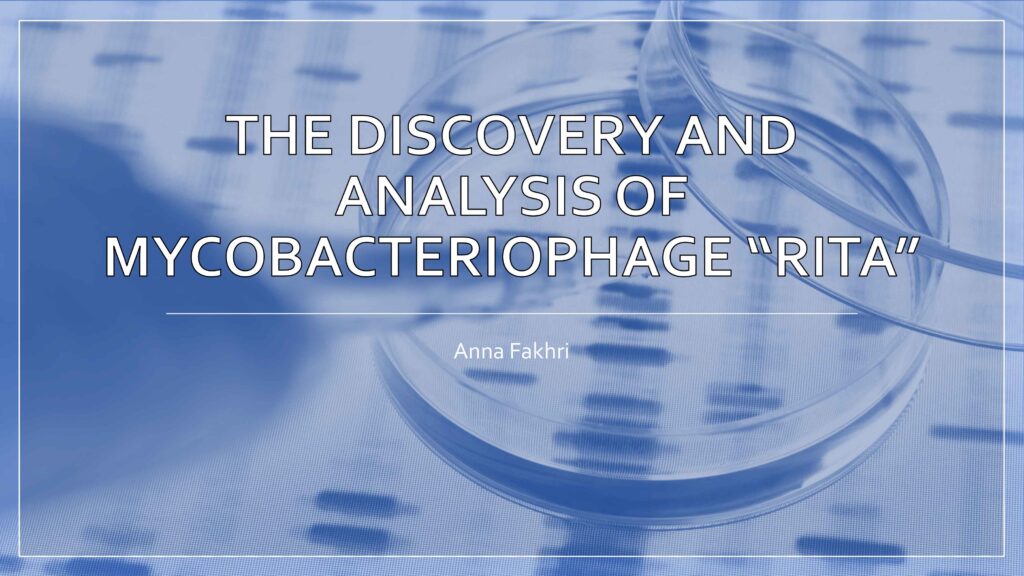Anna Fakhri ’24

The Discovery and Analysis of Mycobacteriophage Rita
Anna Fakhri ’24, Biochemistry major
Faculty Mentor: Dr. Kathleen Cornely, Chemistry and Biochemistry
Oral Presentation: Wednesday, April 24, 3 p.m.
Mycobacteriophages can be utilized therapeutically against pathogenic and antibiotic-resistant mycobacteria. Therefore, mycobacteriophage discovery is a crucial tool in the advancement of phage therapy. The discovery of mycobacteriophage “Rita” in North Easton, Massachusetts was analyzed and determined to belong to cluster F1. Upon completing a genome annotation, genes encoding an immunity repressor and tyrosine integrase were identified, along with a phage attachment site (attP) at 31,855–31,880, indicating that Rita can potentially adopt a temperate lifestyle. Further, Rita has the potential to be glycosylated, as it contains three glycosyltransferase genes. Eukaryotic virus glycosylation assists with infection, whereas within phages, its function is unknown. It is hypothesized that glycosylated phages might assist in phage infection by creating a glycan shield against host anti-body response. Glycosylated phages therefore may be advantageous in a therapeutic application.






